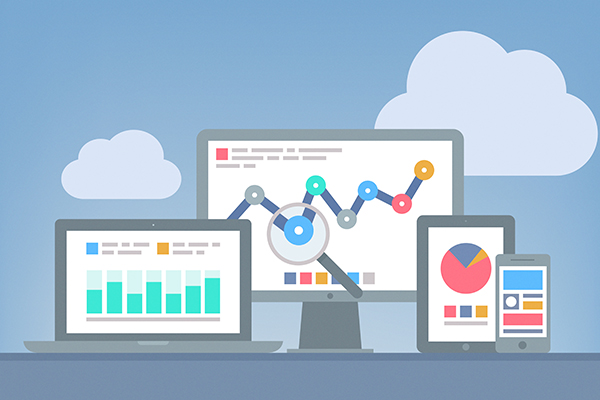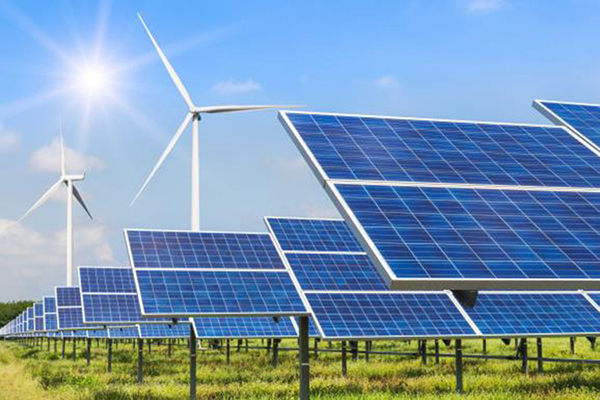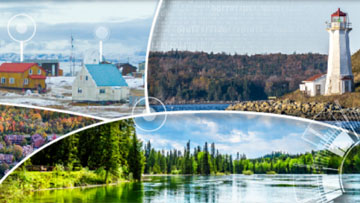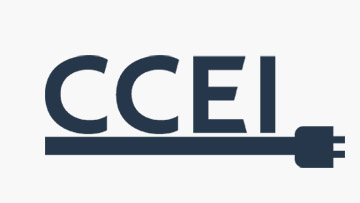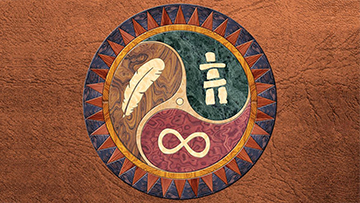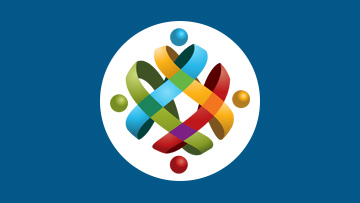Areas described under the Accessible Canada Act
Employment
Accessible employment at StatCan means that employees with disabilities and those experiencing barriers are supported throughout their employee journey. From recruitment and hiring to onboarding and career progression, all employees are supported to reach their full potential.
Desired state
- Job seekers and employees consider StatCan to be an employer that prioritizes accessibility at every step of the employee journey and encourages employees to reach their full potential.
- StatCan achieves and surpasses the workforce availability for persons with disabilities and contributes to the GC commitment of hiring 5,000 net new persons with disabilities by 2025.
Key priorities for 2023 to 2025
- Improve the recruitment process for candidates with disabilities.
- Improve timely and efficient accessibility and accommodations at all steps of the employee journey.
- Provide learning, advancement, and career development opportunities throughout employment.
Barriers
The following are some of the barriers that have been identified within StatCan:
- Lack of knowledge or understanding of accessible and inclusive hiring practices: Managers lack information, resources, and knowledge on how to hire, support and promote persons with disabilities.
- Stigma and attitudinal barriers: Some employees face barriers to retention and promotion because of persistent stigmas and ableist assumptions regarding their ability to do the job or their accommodation needs. Some persons with disabilities do not self-identify because they are concerned about being discriminated against when seeking work, learning and promotional opportunities.
- Inflexible and complex staffing tools and processes: Some tools and processes used for recruitment and staffing, such as job posters and assessment tools, are in an inaccessible format and cannot accommodate diverse needs. Information or wording on posters may be confusing and, as a result, employees with disabilities may not apply for new or promotional opportunities. Once appointed, many persons with disabilities face additional barriers when required to fulfill official language requirements and may face challenges in accessing accessible language training.
Short-term actions
To address the lack of knowledge or understanding of accessible and inclusive hiring practices
- Provide mandatory training for all Human Resources (HR) Advisors and hiring managers on disability awareness and etiquette and on accessible and inclusive recruitment, staffing processes and procedures.
- Ensure Inclusive Hiring Practices for a Diverse Workforce (COR120) training becomes mandatory for all selection board members.
- Update and develop accessible tools for in-person and virtual orientation for new employees, including a section on the intranet where information and tools related to accessibility for new employees are centralized (accessible parking, restrooms, employee networks, accommodation requests, etc.).
- Develop an accessibility checklist outlining the steps to verify the accessibility of promotional hiring materials.
- Create hiring goals for persons with disabilities at all occupational groups and levels.
To address stigma and attitudinal barriers
- Create a framework and timeline to implement priority actions recommended in the reports produced following the employment system review, the accessibility system review, and the Engaging DisAbility Innovation Study.
- Add accessibility training within the mandatory corporate training list for all employees, including managers and executives, and report annually on the completion rate.
- Provide hiring managers with the guidance and resources to discuss accessibility and accommodations with new employees.
- Promote self-identification through a specific campaign on the definition of person with disabilities.
- Participate in conferences and career fairs to develop partnerships with post-secondary institutions, communities and associations that represent persons with disabilities to promote and prioritize the hiring of individuals that identify as having a disability across StatCan.
To address inflexible and complex staffing tools and processes
- Adjust generic job advertisements to make them inclusive and barrier free for all people, including persons with disabilities.
- Produce guidelines on inclusive hiring practices.
- Develop an external page on the StatCan website that provides career information, including testimonials of persons with disabilities and employees experiencing barriers.
- Increase the representation of persons with disabilities in official language (English and French) and development training programs.
- Develop leadership development strategies and programs, including sponsorship and mentorship programs, to prioritize and support the advancement of persons with disabilities.
Indicators
The following indicators will be used to measure StatCan's progress in achieving accessible employment:
- The percentage of HR Advisors and hiring managers who complete training on disability awareness and etiquette and on accessible and inclusive recruitment, staffing processes and procedures increases with the goal of achieving 100%.
- Of all the qualified candidates in a pool who have received a letter of offer, the percentage of those who have self-declared as a person with a disability increases.
- The percentage of persons with disabilities who report feeling that accessibility and accommodation issues have adversely affected their career progress in the federal public service over the last 12 months decreases annually (data source: PSES).
- The number of hires toward StatCan's goal of hiring 219 net new persons with disabilities by 2025 is met or exceeded.
Roles and responsibilities:
Leads: Hiring managers, selection board members and HR Advisors
Enabler: Organizational Design and Resourcing Division
Built environment
An accessible built environment at StatCan is one where workspaces and the work environment are accessible for all. From the spaces in employees' homes to those owned or leased by StatCan, all environments used by employees will be accessible by design.
Desired state
- Employees have barrier-free access to the built environments owned and leased by StatCan.
- Employees are equipped to stay productive and healthy when working from home or from the office.
Key priorities for 2023 to 2025
- Assess the accessibility of StatCan leased spaces or those outside the lease agreement.
- Coordinate the renovations of the National Capital Region (NCR) offices to maximize accessibility and to provide best-in-class individual or systemic accommodations.
Barriers
The following are some of the barriers that have been identified within StatCan:
- Lack of consultation with persons with disabilities and those experiencing barriers: Employees are not consulted in the building design and maintenance processes for StatCan's offices and those not under StatCan's control. This impacts employees' ability to fully participate in their work environment.
- Accessibility is not a key requirement in construction: Because construction projects inadequately consider inclusion by design, employees must ask for accessibility adjustments. This forces employees to work in a non-accessible workplace until adjustments are made and increases costs.
Short-term actions
To address the lack of consultation with persons with disabilities and those experiencing barriers
- Develop a consulting process to receive input from persons with disabilities and employees experiencing barriers on upcoming renovation projects with Public Service and Procurement Canada (PSPC).
- Establish a working group to ensure accessibility codes are respected for all renovation projects.
To address that accessibility is not a key requirement in construction
- Hire a consultant to complete a review of accessibility in the workspaces leased by StatCan in the NCR.
- Coordinate with the Fire Safety Office to ensure all procedures meet accessibility and accommodation requirements.
- Prioritize the accessibility adjustments for the R. H. Coats Building and the Main Building in the NCR.
- Ensure that the spaces owned by PSPC and managed by the property management team meet StatCan's accessibility needs.
- Renovate regional office space to account for accessibility needs.
To contribute to the desired state of enhancing accessibility of the workplace and employee workspaces
- Make building and floor plans easier to find on the current intranet page and include links on the centralized accessibility page.
Indicators
The following indicators will be used to measure StatCan's progress in achieving an accessible built environment:
- Where within the control of StatCan, the percentage of features that comply with national accessibility standards in spaces leased by StatCan and those outside the lease agreement with property management increases with the goal of 100% compliance.
- The percentage of employees who identify as a person with a disability and have reported that they are satisfied with the accessibility of their physical office workspace increases and suggests that the employee workspace is barrier-free.
Roles and responsibilities:
Enablers: Security and Facilities Division and Occupational Health and Safety
Information and communication technologies
Accessible information and communication technologies at StatCan (often called ICT) means that IT products are usable and accessible for everyone. Whether it is software development, infrastructure support, platform operations, service request fulfillment, IT asset management, cloud environments or offsite support, these all need to be accessible.
Desired state
- All employees have the electronic and software tools they need to do their work.
- Accessibility is an integrated and expected component of IT infrastructure (for example, security, infrastructure and application procurement or development).
- Accessibility is part of standardized approaches, and needs are considered in the lifecycle of software and services development and software and hardware purchases.
- Accessibility is incorporated and prioritized at every stage of IT processes.
Key priorities for 2023 to 2025
- Improve IT employee knowledge to provide better accessibility and accommodations support to StatCan employees.
- Integrate accessibility in every stage of product and service development.
- Achieve IT accessibility compliance.
Barriers
The following are some of the barriers that have been identified within StatCan:
- Knowledge gaps within the IT team: IT employees lack awareness in how to best support and adapt their work for persons with disabilities and employees experiencing barriers. This impacts IT's ability to best support persons with disabilities and those experiencing barriers.
- Accessibility consideration: At the time of purchase or creation, IT products and services do not prioritize accessibility, and this results in inaccessible purchases being made when barriers could have been signalled at the very beginning. This means that persons with disabilities and persons experiencing barriers cannot use these necessary tools.
- Unavailable tools: Accessibility can be limited by the available technology, and sometimes the necessary tools and technology do not exist or are not available in all three networks. This prevents persons with disabilities and those experiencing barriers from accessing some of their accommodations.
- Lengthy accommodation processes: It takes a long time for IT to receive accommodation requests because making technology requests can be confusing and time consuming for employees. This means that some employees might start working without their necessary tools.
Short-term actions
To address knowledge gaps within the IT team
- Document barriers and develop training, software and hardware to solve them.
- Assign accessibility-specific training for each role in the Digital Solutions Field to ensure all IT job streams are covered.
- Develop accessibility assessment metrics that are applicable to all offerings from the Digital Solutions Field.
To address accessibility considerations
- Create an inventory of IT products, services, and documents to then schedule consultations on, and assessments of, their accessibility.
- Introduce IT policies, processes, guidelines and accessibility best practices for new and existing IT products, services, and content.
- Launch the IT accessibility self-serve portal to capture user feedback and IT accessibility issues.
- Operationalize an IT accessibility governance board that includes all relevant partners within StatCan.
- Implement change at the contracting and governance level to include accessibility from the planning to the delivery stage (accessibility by design).
- Pilot accessibility standards and compliance for the release and deployment of new IT items.
- Operationalize accessibility standards and compliance for the release and deployment of new IT content, products, and services.
To address unavailable tools
- Create a list of accessibility tools that are available to all employees.
- Launch the self-serve portal that makes common adaptive solutions available to all employees by default.
To address lengthy accommodation processes
- Allow for greater flexibility in the customization of computer settings so employees can address accessibility challenges.
- Create an accessibility support team for all employees.
Indicators
The following indicators will be used to measure StatCan's progress in achieving an accessible IT:
- The percentage of employees and managers within the Digital Solutions Field who have completed mandatory accessibility and accommodation support training increases with the goal of reaching 100% completion.
- The percentage of tools and platforms that are developed or deployed (managed by StatCan) that meet accessibility standards (EN 301549 / WCAG [Web Content Accessibility Guidelines] 2.1) increases to result in 100% of all developed tools and platforms include accessibility in their design.
- The timelines of IT accommodations requests, from initiation to full completion, continually improve.
Roles and responsibilities:
Enabler: Information Technology Operations Services Division
Communication, other than information and communication technologies
Accessible communication at StatCan means information that is provided, sent, or received is clear, direct and easy to understand and meets the needs of employees and Canadians.
Desired state
StatCan communication tools and services (in-person, digital or other) are accessible, inclusive, written in plain language, and free of biases and discrimination.
Key priorities for 2023 to 2025
- Identify and remove accessibility barriers in the design and delivery of communication tools and services.
- Develop a communication plan to build internal awareness on accessibility.
- Promote the use of accessible communication tools to StatCan employees.
Barriers
The following are some of the barriers that have been identified within StatCan:
- The communication of information is inconsistently accessible: Internal communication products, such as the ICN and information broadcast popups, do not always consider the information access needs of all users. Some corporate communication products, such as PowerPoint presentations and briefing documents, are developed and shared in inaccessible formats or contain inaccessible elements.
- Lack of emphasis on the accessible design of communications: There is a perception among employees that communication about the importance of accessible information is generic and not a primary focus at StatCan. Communication products are not varied enough to accommodate for different learning styles or to reach a broad audience.
Short-term actions
To address the communication of information that is inconsistently accessible
- Identify communication tools that are commonly used by employees, assess the accessibility barriers, and recommend alternatives.
To address the lack of emphasis on the accessible design of communications
- Develop a policy on internal and external accessible document dissemination that considers accessibility best practices.
- Raise awareness about the need for ASL and LSQ services for internal and external events.
- Promote plain language training and best practices for all employees.
- Increase accessibility awareness through internal channels (for instance, ICN and @StatCan articles) and consider enhancements (for example, audio formats and ASL and LSQ videos).
- Train all executive assistants; senior managers; developers of dashboards, portals, and dissemination tools; and Communications, Engagement and Training staff on accessibility standards and best practices.
- Diversify the methods for communicating about accessibility to accommodate different learning styles, including town halls and similar events focused on accessibility, and build the case for why StatCan is making this a priority.
Indicator:
The following indicator will be used to measure StatCan's progress in achieving accessible communications:
- The percentage of accessible internal and external facing communication tools and products increases each year with the goal of achieving 100% accessibility.
Roles and responsibilities:
Enablers: Strategic Communications and Planning Division and the Center of Expertise on Accessibility, Dissemination Division
Procurement of goods, services, and facilities
The accessible procurement of goods, services, and facilities at StatCan means to centralize purchases, including computer software and hardware and a variety of external professional services, while prioritizing accessibility.
Desired state
- All purchase processes consider accessibility requirements and do not create new barriers or perpetuate current barriers.
- Accessibility is considered early and across several vendors to ensure that it is included and prioritized in finalist selection criteria.
Key priorities for 2023 to 2025
- Implement accessibility requirements in the procurement process.
- Increase awareness and resources related to accessibility purchases among procurement specialists.
- Ensure that accessibility and the needs of employees facing barriers are considered when new equipment is purchased (for example, microwaves, printers, signs and security gates).
Barriers
The following are some of the barriers that have been identified within StatCan:
- GC centralized programs and policies: Some purchases that affect the accessibility of StatCan are made through pre-established methods. These methods fall under the responsibility of PSPC and Shared Services Canada. Some software licences that are necessary for the operation of StatCan's core services are renewed despite inaccessibility.
- Lack of consultation: The procurement process lacks consultation with persons with disabilities and those experiencing barriers. This impacts the opportunity to report accessibility issues at the start of the procurement process.
- Insufficient knowledge: The procurement team lacks tools on to how to ensure that accessibility is considered throughout the procurement process. Persons with disabilities who are unable to use products may require secondary purchases as a duty to accommodate.
Short-term actions
To address GC centralized program and policies
- Stay informed on new accessibility standards and consult other government departments for implementation within StatCan.
- Consult the Financial Management System to find a way to track accessibility requirements.
To address the lack of consultation
- Biannually present projects from the procurement team and progress reports to the PwDC to gather feedback and requests.
- Meet with the DTA team to facilitate the procurement process for recurring items on accessibility requests.
To address insufficient knowledge
- Report quarterly accessibility progress and compliance within the Financial Management System.
- Evaluate the accessibility of internal documents and templates and plan for their modification.
- Train employees on accessible procedures for all procurement practices and any related accessibility training.
- Monitor purchased equipment and promptly report anything that is inaccessible.
Indicators:
The indicators articulated below will be used to measure StatCan's progress in achieving an accessible procurement:
- The percentage of contracts managed by StatCan that meet, and can be validated against, accessibility requirements and standards, such as EN 301 549 national standards, increases with the goal of achieving 100%.
- The percentage of procurement employees who have completed mandatory accessibility purchase training increases with the goal of achieving 100% completion.
Roles and responsibilities:
Lead: Procurement, Financial Systems, and Internal Controls Division
Design and delivery of programs and services
The accessible design and delivery of programs and services at StatCan means that surveys, programs, and services are inclusive and accessible by design to meet the needs of Canadians and employees.
Desired state
- Employees have the necessary tools and resources to design and deliver accessible services to persons with disabilities and those experiencing barriers.
- The design and delivery of StatCan surveys, programs and services is informed by feedback from clients, data users and persons with disabilities.
- Clients and employees can independently participate in programs, services, consultations, meetings and feedback processes in an inclusive, accessible, open and safe manner while protecting their language rights, privacy, confidentiality and security.
Key priorities for 2023 to 2025
- Identify, remove and prevent accessibility barriers in the design and delivery of StatCan's programs and services.
- Develop and pilot standardized approaches for accessibility services.
Barriers
The following are some of the barriers that have been identified within StatCan:
- Reactive approach: StatCan takes a reactive approach to accessibility rather than a proactive approach. This can make programs and services unavailable to persons with disabilities and employees experiencing barriers.
- Inaccessible tools: Internal tools (for example, the Time Management System, information management tools and statistical software) are inaccessible. Persons with disabilities and employees experiencing barriers may need to request access to files and programs, adding delays to their deliverables.
- Lack of centralized approach to address accessibility needs: The lack of a centralized approach to address accessibility needs for surveys, programs and services leads to inconsistency in how these requests are processed. This delays accessibility accommodations and affects employees' ability to do their job.
Short-term actions
To address the reactive approach
- Create an inventory of programs and services used within StatCan.
- Conduct systems review to identify and remove accessibility barriers in the design and delivery of our statistical programs and services.
- Launch assessments and reviews of internal services, including the accessibility of learning programs, the GC Workplace Accessibility Passport and research data centres.
To address inaccessible tools
- Create a working group and develop an action plan for centralized translations services (for example, ASL, LSQ and braille) and collaborate with the service provider, PSPC, to ensure sufficient resources are allocated to provide translation services.
- Participate in StatCan and GC working groups to standardize accessibility tools and testing methods and come up with common procurement measures to acquire accessible tools.
To address the lack of a centralized approach to address accessibility needs
- Build awareness by updating and promoting the intranet page that presents the services offered by the Centre of Expertise on Accessibility (CEA), with CEA links on the centralized accessibility site.
- Deliver presentations of the services offered by the CEA to managers and employees across the organization.
Indicators
The following indicators will be used to measure StatCan's progress in achieving accessible programs and services:
- The percentage of clients and employees with disabilities who are satisfied when accessing StatCan's services increases annually.
- The percentage of statistical programs and services that meet the standardized requirements or procedures increases each year with the goal of achieving 100%.
Roles and responsibilities:
Enabler: Dissemination Division
Transportation
- Statistics Canada has not identified any barriers in departmental policies, practices, programs, and services regarding transportation at this time.
- Statistics Canada will ensure that regular monitoring of this area will occur to ensure prevention and removal of barriers.
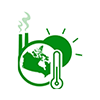
 Environment
Environment Economy
Economy Population and society
Population and society Extreme events and natural disasters
Extreme events and natural disasters Financial impacts and risks
Financial impacts and risks


